Naval ships broken at Wards 1922-1929
| < Intro | Δ Index | 1931-1946 > |
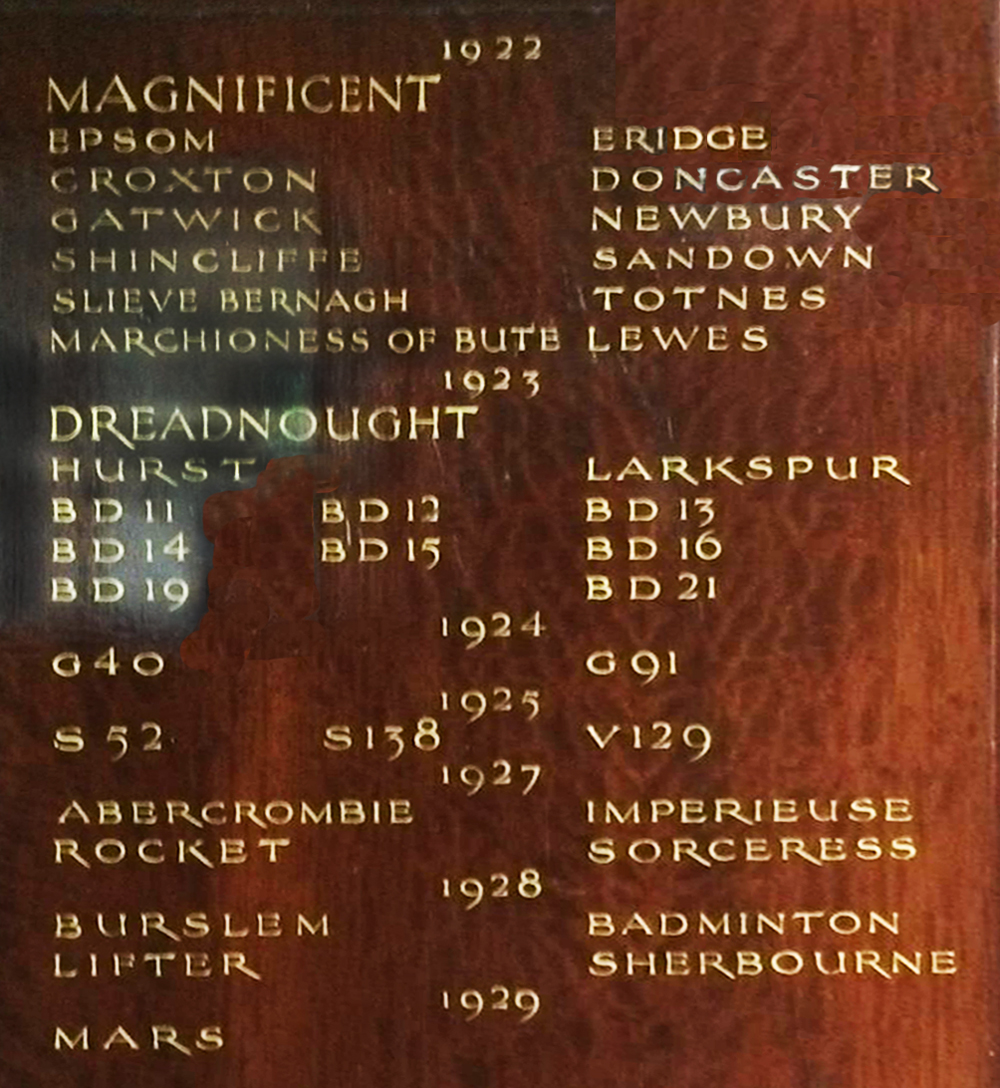
1922
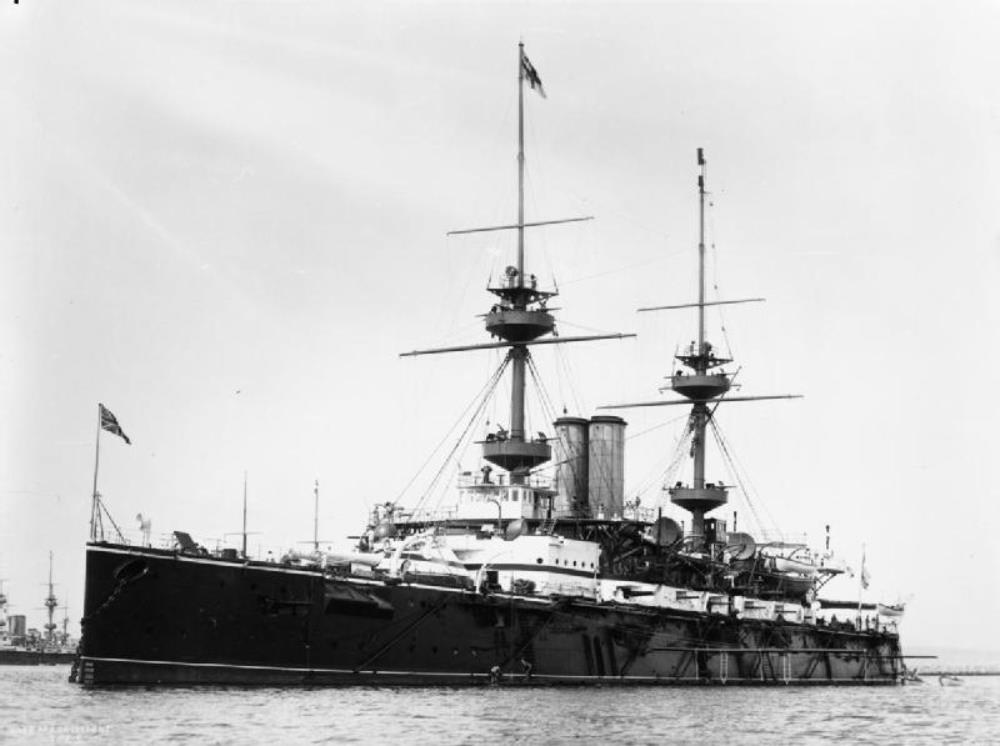
HMS Magnificent – pre-dreadnought battleship. Built at Chatham Dockyard in 1895.
She served with the Home Fleet for most of her pre-war service. Among the oldest of Britain’s battleships at the time, Magnificent was a guard ship on the Humber when World War I broke out. She was then assigned to Scapa Flow as a guard ship.
In 1915, she was stripped of her main armament, and converted to a troopship for use in the Dardanelles Campaign. In 1917, she was converted to an ammunition ship.
Wikipedia – HMS_Magnificent_(1894)
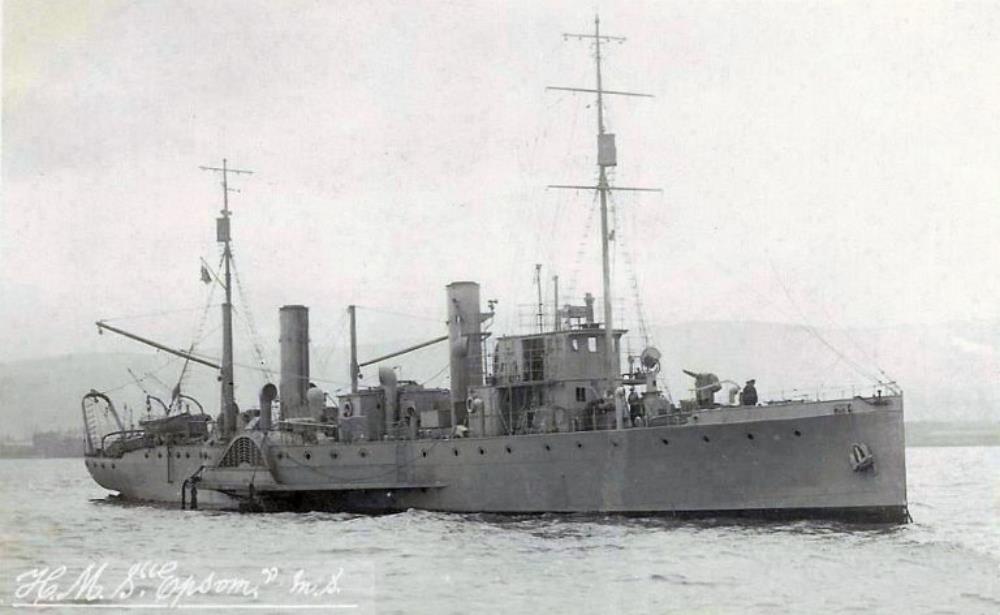
HMS Epsom – Racecourse Class paddle-minesweeper built by George Brown & Company, Greenock. Launched 4 May 1916.
Assigned to 8th Fast Sweeping Flotilla, Queenstown. After 1919 the vessel remained at Rosyth until January 1921 when she became one of thirteen minesweepers paid off there.
Epson & Ewell History Website Article
HMS Croxton – Racecourse Class paddle-minesweeper. Launched 7.4.16 Ayrshire Dockyard Company. Served with Auxiliary Patrol.
www.naval-history.net
HMS Gatwick – Racecourse Class paddle-minesweeper. Launched 18.4.16 Dundee Shipbuilding Company. Served with Auxiliary Patrol.
www.naval-history.net
HMS Shincliffe – Racecourse Class paddle minesweeper, Launched 29.1.18 Dundee Shipbuilding Company. Served with Auxiliary Patrol
www.naval-history.net
HMS Slieve Bernagh – Paddle Steamer, built by J&G Thomson of Clydebank 1894, for the Belfast and County Down Railway. Sold in 1912 to D&J Nicol of Dundee. Served as a Royal Navy hospital ship at end of WWI
wikipedia
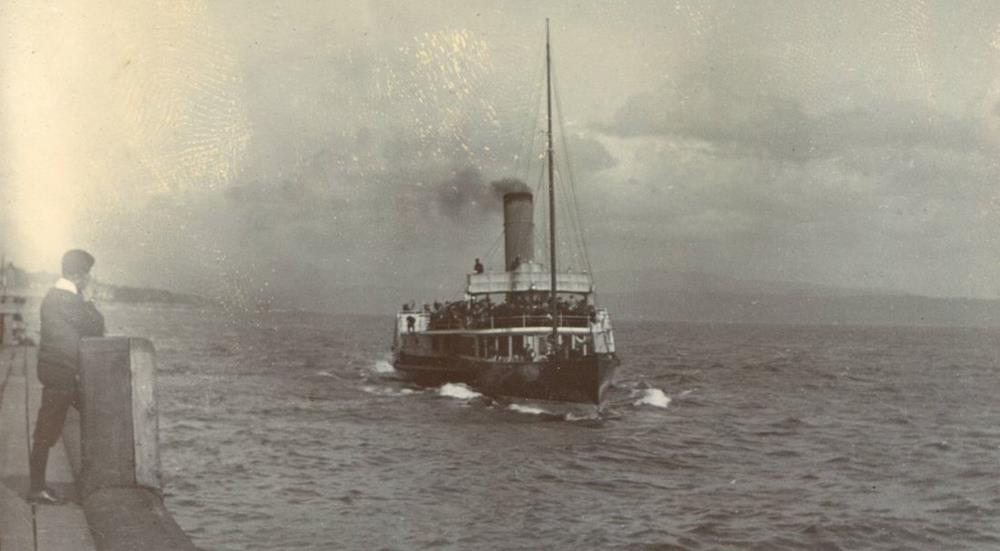 HMS Marchioness of Bute – Paddle Steamer, Built by John Reid and Co in 1890, for the Wemyss Bay – Rothesay service. Sold in 1908 to D & J Nicol for service on the Tay. Served as a minesweeper at Portsmouth in World War I and, as a hospital ship, ventured as far as Archangel.
HMS Marchioness of Bute – Paddle Steamer, Built by John Reid and Co in 1890, for the Wemyss Bay – Rothesay service. Sold in 1908 to D & J Nicol for service on the Tay. Served as a minesweeper at Portsmouth in World War I and, as a hospital ship, ventured as far as Archangel.
www.paddlesteamers.info
HMS Eridge – Racecourse Class paddle minesweeper. Launched 23.2.16 Clyde Ship Building Company. Originally fitted to carry seaplanes. Served with Auxiliary Patrol.
www.naval-history.net
HMS Doncaster – Racecourse Class paddle minesweeper. Launched 15.6.16 Ayrshire Dockyard Company. Served with Auxiliary Patrol.
www.naval-history.net
HMS Newbury – Racecourse Class paddle minesweeper. Launched 3.7.16 Inglis Ship Builders Glasgow (who later built “Maid of the Loch” and “Waverley.”) Served with Auxiliary Patrol.
www.naval-history.net
wikipedia
HMS Sandown – Racecourse Class paddle minesweeper. Launched 6.7.16 Dunlop Bremner, Port Glasgow. Served with Auxiliary Patrol.
www.naval-history.net
HMS Totness – Racecourse Class paddle minesweeper. Launched 17.5.16 James McMillan, Greenock. Served with Auxiliary Patrol.
www.naval-history.net
HMS Lewes – Racecourse Class paddle minesweeper. Launched 12.3.18 Fleming & Ferguson, Paisley. Served with Auxiliary Patrol.
www.naval-history.net
1923
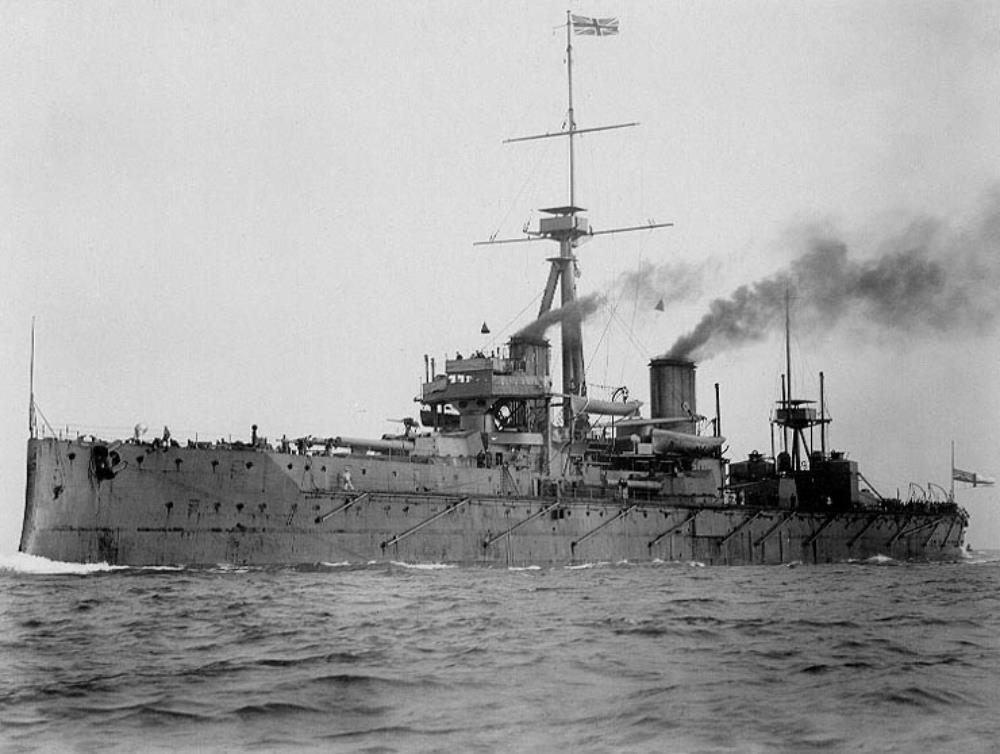 HMS Dreadnought was the Royal Navy battleship that revolutionised naval power. Her entry into service in 1906 from HM Dockyard, Portsmouth represented such an advance in naval technology that her name came to be associated with an entire generation of battleships, the “dreadnoughts”, as well as the class of ships named after her. Likewise, the generation of ships she made obsolete became known as “pre-dreadnoughts”.
HMS Dreadnought was the Royal Navy battleship that revolutionised naval power. Her entry into service in 1906 from HM Dockyard, Portsmouth represented such an advance in naval technology that her name came to be associated with an entire generation of battleships, the “dreadnoughts”, as well as the class of ships named after her. Likewise, the generation of ships she made obsolete became known as “pre-dreadnoughts”.
Dreadnought was the first battleship of her era to have a uniform main battery, rather than having a few large guns complemented by a heavy secondary armament of smaller guns. She was also the first capital ship to be powered by steam turbines, making her the fastest battleship in the world at the time of her completion. Her launch helped spark a naval arms race with the German Imperial Navy, in the build-up to the First World War.
HMS Hurst – Racecourse Class paddle minesweeper. Launched 6.5.16 Dunlop Bremner, Port Glasgow. Served with Auxiliary Patrol.
www.naval-history.net
www.dreadnoughtproject.org
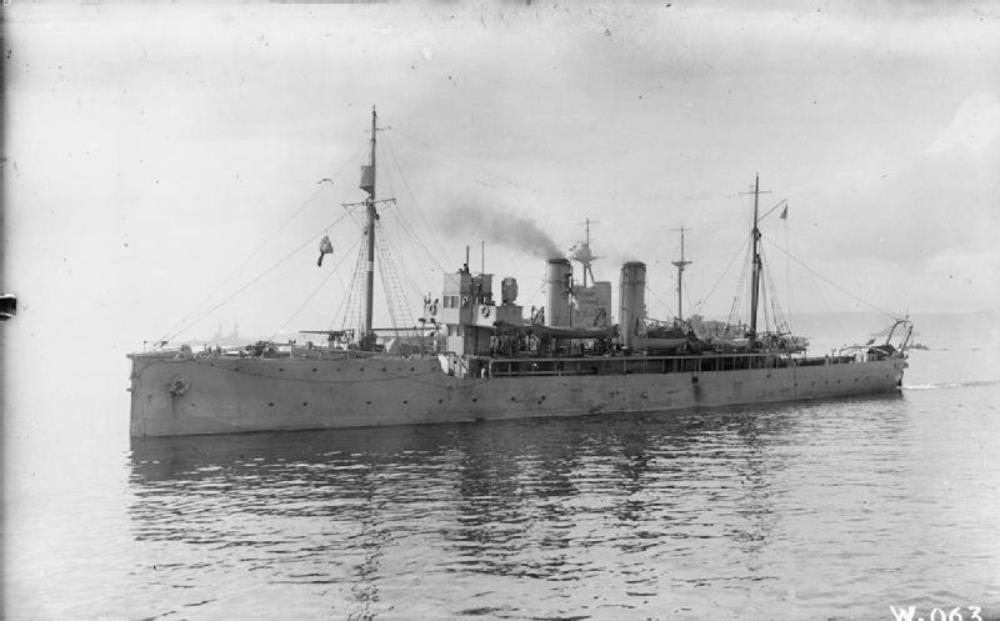 (Image is of HMS Acacia.)
(Image is of HMS Acacia.)
HMS Larkspur – an Acacia-class sloop – was launched 11.5.15 Napier & Miller, Old Kilpatrick.
The sloops were used almost entirely for minesweeping until 1917, when they were transferred to escort duty.
They were single-screw fleet sweeping vessels with triple hulls at the bows to give extra protection against loss when working.
www.naval-history.net
wikipedia – Acacia class sloop
BD-series boom defence vessels displacing 300 tons, had no propelling machinery, Armament: 1-12pdr AA.
www.naval-history.net
BD 11 – Boom defence vessel, launched 1917 W Chalmers, Rutherglen. In service at Cromarty, Granton or Humber.
BD 12 – Boom defence vessel, launched 16.11.17 W Chalmers, Rutherglen. In service at Cromarty, Granton or Humber.
BD 13 – Boom defence vessel, launched 13.12.17 W Chalmers, Rutherglen. In service at Cromarty, Granton or Humber.
BD 14 – Boom defence vessel, launched 12.4.18 W Chalmers, Rutherglen. In service at Cromarty, Granton or Humber.
BD 15 – Boom defence vessel, launched 15.11.17 Scott, Bowling. In service at Cromarty, Granton or Humber.
BD 16 – Boom defence vessel, launched 10.12.17 Scott, Bowling. In service at Cromarty, Granton or Humber.
BD 19 – Boom defence vessel, launched 17.11.17 Manchester Drydock Co, Ellesmere Port. In service at Cromarty, Granton or Humber.
BD 21 – Boom defence vessel, launched 1917 Ritchie, Graham & Milne, Whiteinch. In service at Cromarty, Granton or Humber.
1924
G40 – German destroyer built by Germaniawerft, Kiel, scuttled at Scapa Flow – raised by Cox and Danks.
G91 – German destroyer built by Germaniawerft, Kiel, scuttled at Scapa Flow – raised by Cox and Danks.
1925
S52 – German destroyer built by Schichau, Danzig, scuttled at Scapa Flow – raised by Cox and Danks.
S138 – German destroyer built by Schichau, Danzig, scuttled at Scapa Flow – raised by Cox and Danks.
V129 – German destroyer built by A G Vulcan, Hamburg, scuttled at Scapa Flow – raised by Cox and Danks.
She was sent to Scapa Flow replace V30 which struck a mine on the way to the surrender of the German High Seas Fleet in November 1918.
1927
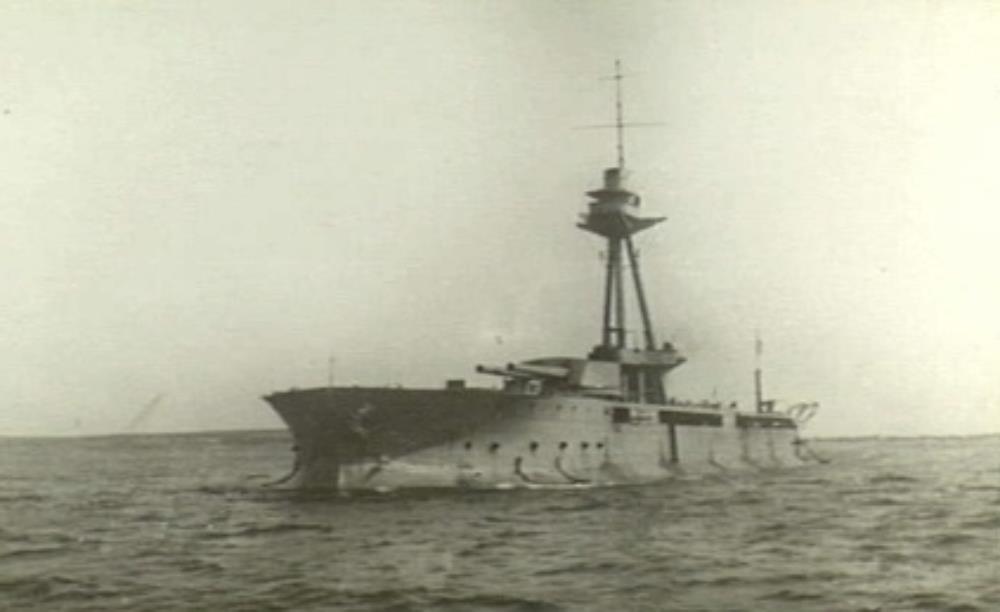 HMS Abercrombie – monitor.
HMS Abercrombie – monitor.
On 3 November 1914, Charles M. Schwab of Bethlehem Steel offered the Admiralty, four 14 in twin gun turrets, originally destined for the Greek battleship Salamis. The Royal Navy immediately designed a class of monitors, designed for shore bombardment, to use the turrets.
Abercrombie was laid down at the Harland and Wolff shipyard in Belfast on 12 December 1914. Both monitors were built to a high level of completion before launching, with nearly all machinery in place except for the turret, which required a heavyweight lift, and was fitted at the Coventry Ordnance Works yard on the Clyde.
Abercrombie sailed for the Dardanelles on 24 June 1915, and provided fire support during the Battle of Gallipoli.
She remained in the Eastern Mediterranean and the Aegean, until the end of the war. She was decommissioned in May 1919 and disarmed in June 1920.
www.naval-history.net
wikipedia
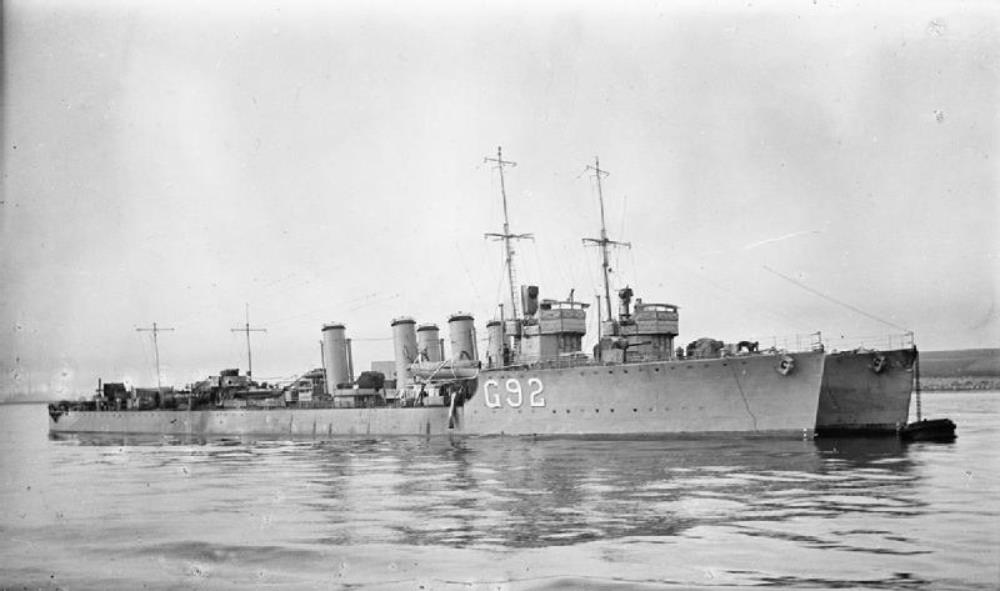 Image is two R-class destroyers
Image is two R-class destroyers
HMS Rocket was an R-class destroyer which served with the Royal Navy during World War I.
Built by William Denny of Dumbarton, launched on 2 July 1916 after being stuck on the slipway since 30 June.
She joined the Grand Fleet, operating as part of a destroyer flotilla undertaking anti-submarine operations in the North Sea.. After the War, the destroyer served with the anti-submarine and torpedo schools at Portsmouth, and briefly during the Chanak Crisis of 1922, before being sold to be broken up on 16 December 1926.
wikipedia
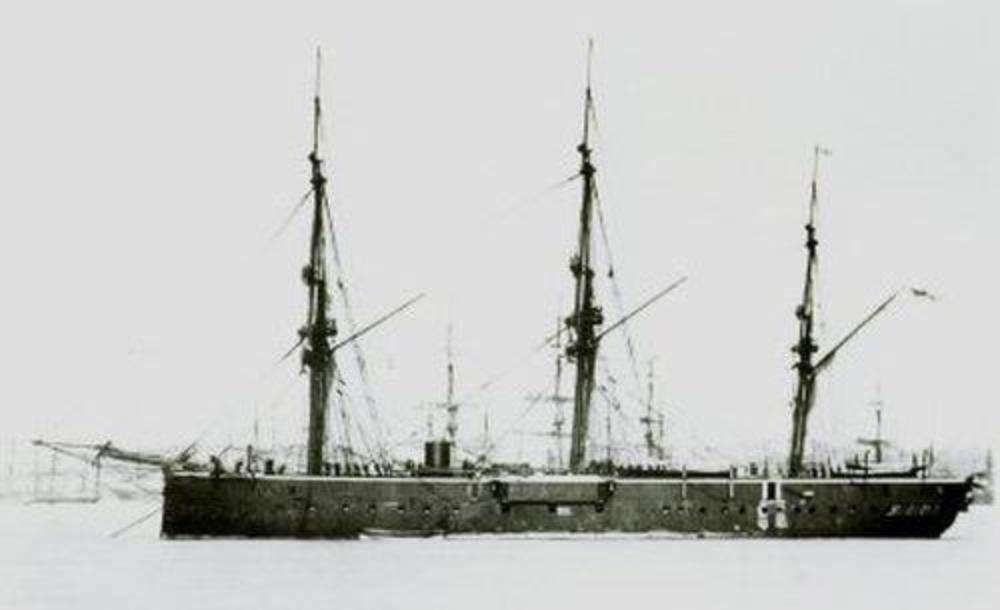 HMS Audacious as originally built.
HMS Audacious as originally built.
HMS Audacious was built by Robert Napier in Govan, Glasgow. Launched on 27 February 1869, she became guard ship of the First Reserve at Kingstown, Ireland, then transferred to Hull where she remained until 1874. She was ordered to the Far East that year to serve as the flagship for the China Station. Iron Duke relieved her in 1878. Audacious returned to her previous post in Hull in 1879.
She underwent a lengthy refit in 1883 and again became flagship of the China Station. Audacious remained there until 1889 when she returned to Chatham where she was refitted again before returning to Hull for the third time until she was decommissioned in 1894.
Her engines were removed and she was converted to a depot ship at Chatham in 1902. She then acted as depot ship for destroyers at Felixstowe until 1905, when she paid off. The ship was towed to Scapa Flow in 1914 after the start of the First World War to be used as a receiving ship and was renamed HMS Imperieuse.
She was towed from Scapa to Rosyth on 31 March 1920, where she remained as a store ship until 15 March 1927.
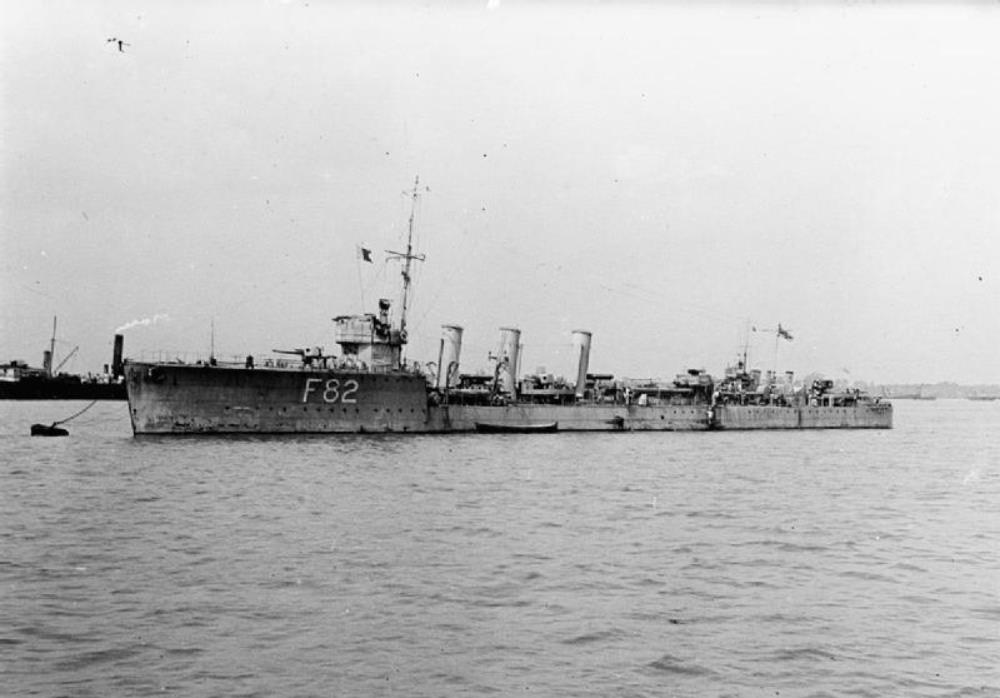 Sister ship HMS Thisbe
Sister ship HMS Thisbe
HMS Sorceress – R-class destroyer built by Swan Hunter & Wigham Richardson at Wallsend launched in August 1916. She joined the 15th Destroyer Flotilla of the Grand Fleet
wikipedia
1928
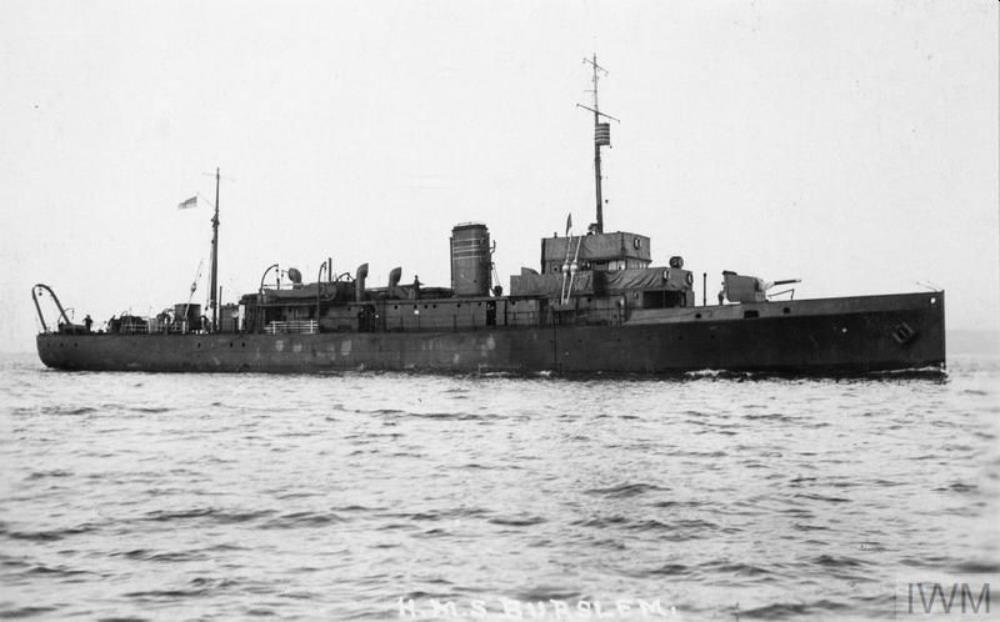
HMS Burselm – Hunt class minesweeper. Built by the Ayrshire Dockyard Company, launched April 1918.
One of 32 of this class completed by November 1918.
27 served in Home Waters, five in Mediterranean.
She was originally to be named Blakeney, but this was changed to avoid any conflict between the vessel name and a coastal location.
www.naval-history.net
wikipedia
HMS Lifter – no record found!
www.naval-history.net
HMS Badminton – Hunt class minesweeper, built by Ardrossan Dry Dock & Shipbuilding Company. Launched March 1918.
She was not finished in time to participate in the First World War, and became part of the 7th (North Sea) Minesweeping Flotilla, based at Grimsby at the end of the war. The flotilla, was deployed to Ijmuiden in the Netherlands to help to clear the large German minefields off the Dutch coast.
In the early 1920s, Badminton took part in coastal patrols off Ireland, mainly in supply and support role to Coastguard stations, but also targeting possible gun smuggling.
www.naval-history.net
HMS Sherbourne – Hunt class minesweeper, built by William Simons & Company, Renfrew. Launched June 1918. (originally named HMS Tarbert)
www.naval-history.net
1929
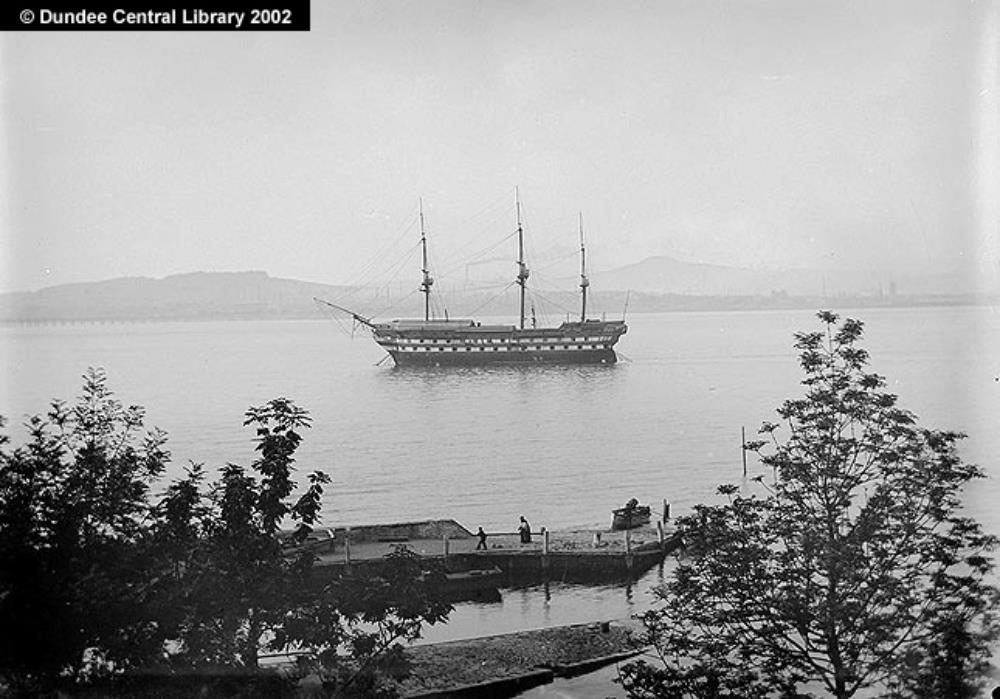
HMS Mars was a two-deck 80-gun second rate ship of the line of the Royal Navy, launched on 1 July 1848 at Chatham Dockyard.
She served as a supply carrier in the Crimean War, and was fitted with screw propulsion in 1855. She then saw service in the Mediterranean. In 1869 she was moored in the River Tay. She served there as a training ship until 1929, having been refitted with masts at Sheerness.
wikipedia
www.dundeecity.gov.uk
| < Intro | Δ Index | 1931-1946 > |